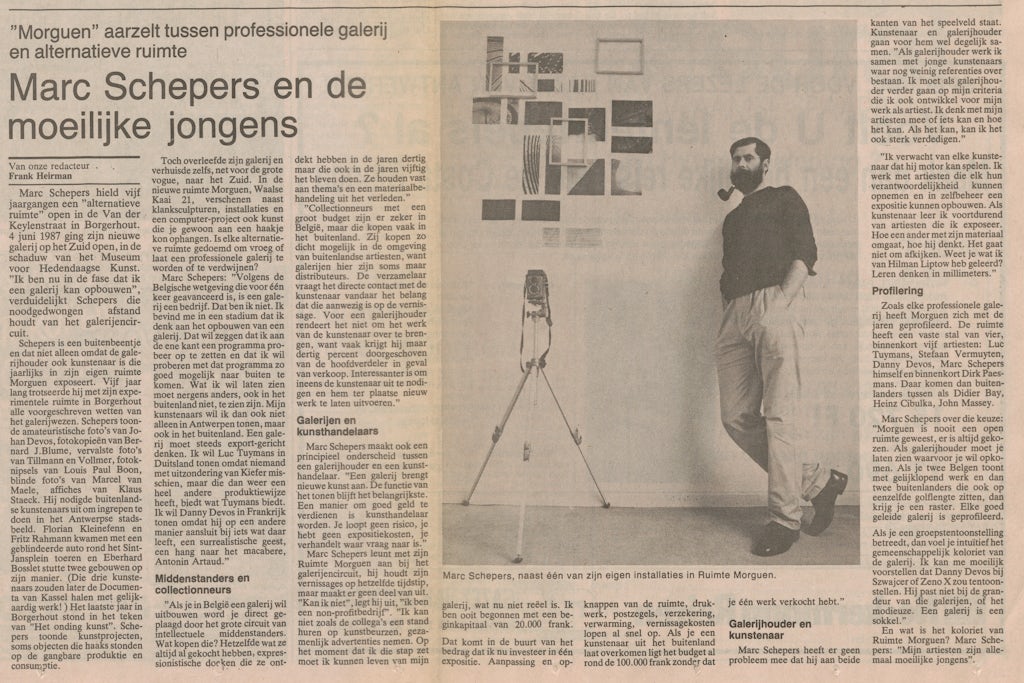Jef Verheyen Archive
Jef Verheyen consistently marched to the beat of his own drum within the history of Flemish, Belgian and international abstract art from 1954 to 1984. Characteristic of Verheyen, is that despite having co-founded the innovative Antwerp Groep 58 in his younger years, he had already abandoned these young experiments as early as 1960 to found his own New Flemish School. This not only testifies to Verheyen’s sharp critical mind but also to what Freddy De Vree described as follows in 2004: ‘He quickly behaved as though he were an outsider on the art scene of his time, even though what he really wanted was to be at its centre.’
A study of his archive should illuminate the motives behind Verheyen’s behaviour in general and his not unnoticed exit from G 58 in particular. It could be that Verheyen was less interested in the experiment as such (i.e. in the experiment as art for art’s sake) and was more interested in exploring the possibilities of abstract art. In any event, from 1959 onwards, the words ‘ecstasy’ and ‘essentialism’ developed into the key concepts of his own critical reflections, which he wished to use to look for the universal. The painter repeatedly asked himself questions that most of his contemporaries from the G 58 may have been less preoccupied with. Verheyen was not only a man of images, but also of ideas. (Ref. The last Modernists – Jef Verheyen, Paul De Vree and the Flemish landscape of the 1960s in Jef Verheyen, Le Peintre Flamant, tent. cat., Langen Foundation (11/09/2010 – 16/01/2011), Brussels: ASA Publishers, 2010: p. 113.)
Rendering the archive accessible is essential to gaining insight into the source/s of Verheyens’ never-ending stream of ideas. His friendships with writers such as Ivo Michiels and Paul De Vree, as well as his self-curated network of gallery owners (Hans Liechti, Iris Clert, Axel Vervoordt, Galleria Pater, Hubertus Schoeller, etc.) indubitably helped shape him in this area. For example, Verheyen wondered in a text he published, ‘Is universality part of the tradition?’. The manifesto inaugurating the launch of his New Flemish School into the world in 1959 also bears witness to an equally well-read ‘intellectualism’. A certain rhetoric of the Flemish Movement shines through in the manifesto and may evidence the influence that writers such as Ivo Michiels and Paul De Vree exerted on him.
More than just a painter, Verheyen was an uninhibited modernist, a latecomer homo universalis and internationalist whose importance as a link between the Belgian and the international art world can hardly be overestimated. In any event, this latter is evidenced by Liber Amicis, a hitherto undisclosed work conserved in the archive, in which Jef Verheyen shares communications from his network of friends at home and abroad.
CKV started working with the Jef Verheyen Archive in 2019 to gear up for the opening of artist Jef Verheyen’s (1932-1984) oeuvre and archive to the public. To this end, CKV is making the Ensembles web platform accessible for the development of the oeuvre overview and the contextualisation of key archive documents.


